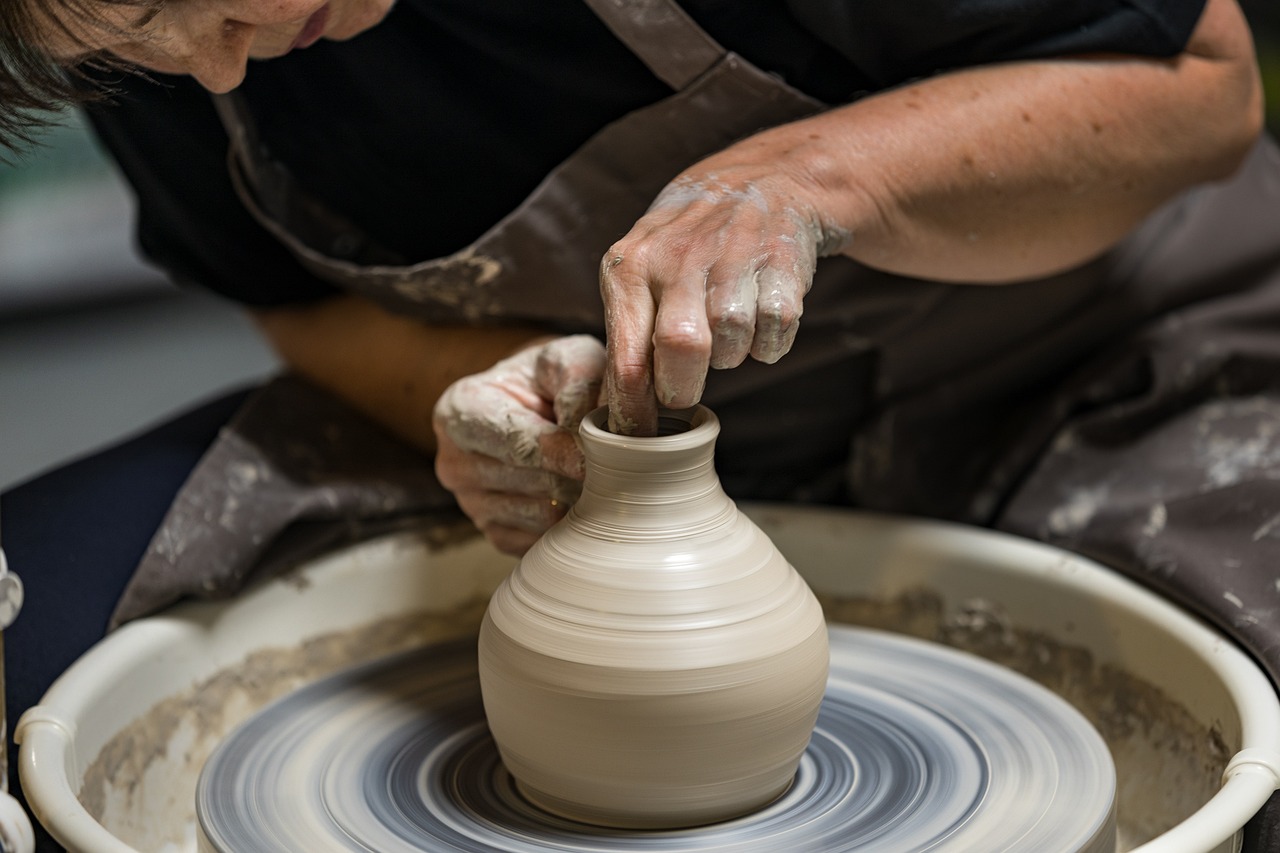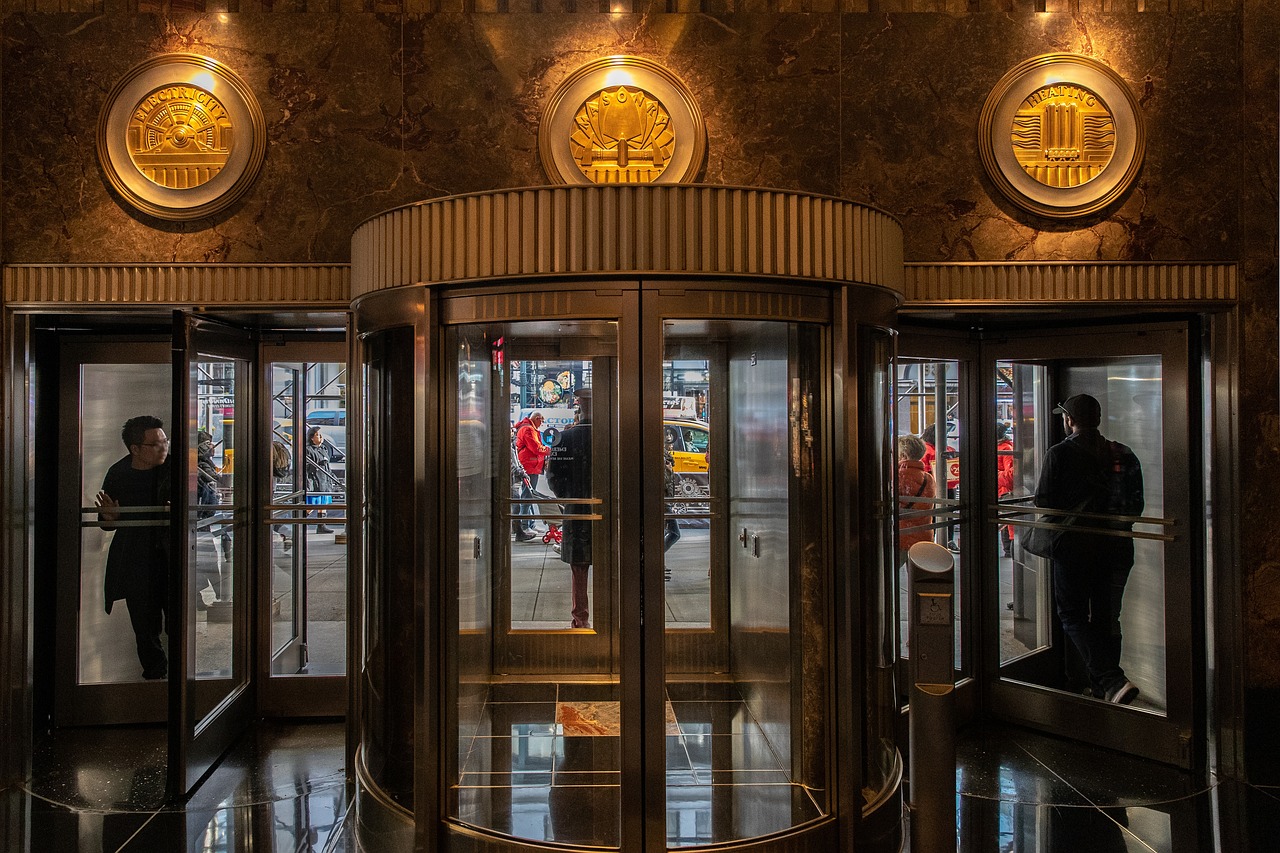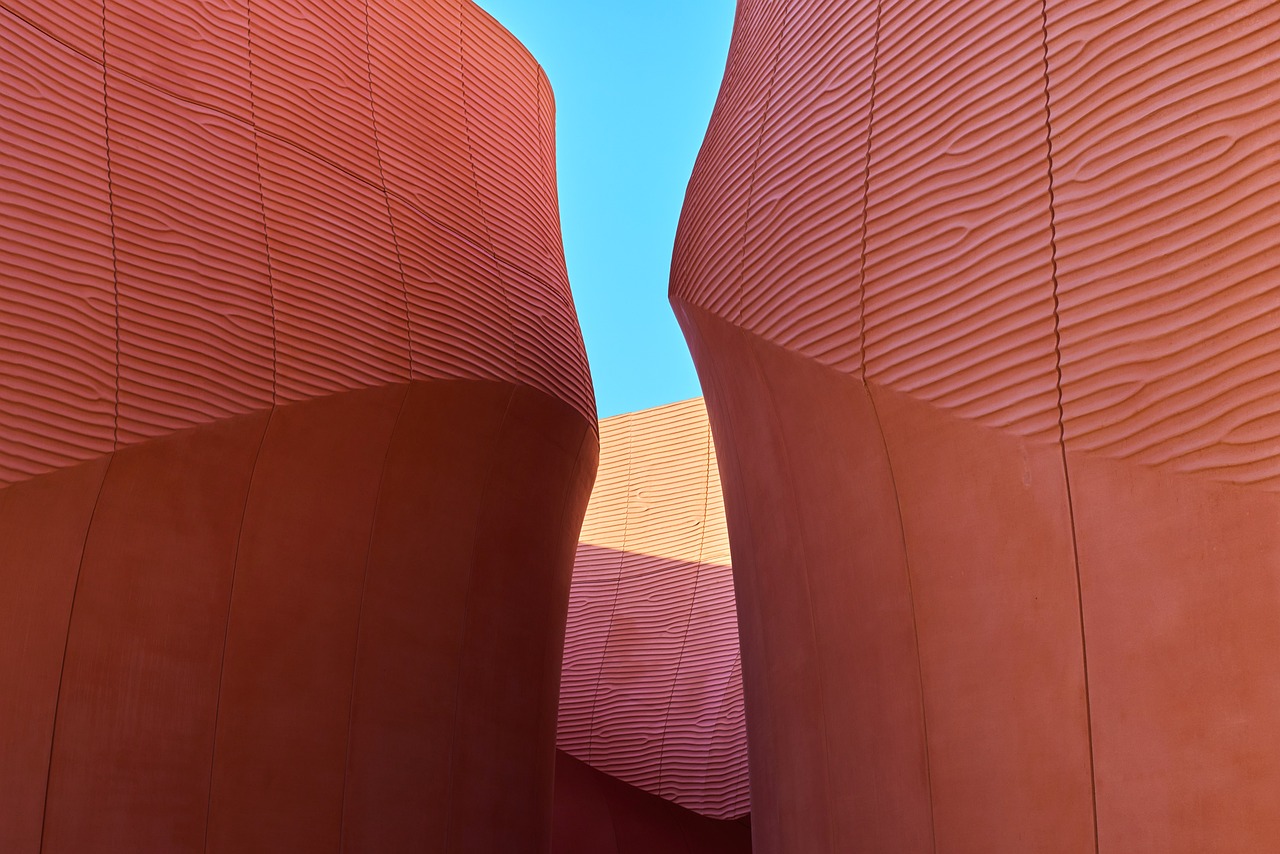The Aesthetic Principles of Art Deco
Art Deco, a prominent visual arts movement that emerged in the 1920s and 1930s, is renowned for its distinctive design principles and characteristics that have left a lasting impact on architecture, interior design, fashion, and art. This iconic style is defined by a harmonious blend of geometric shapes, bold colors, luxurious materials, streamlined forms, and decorative ornamentation, all of which contribute to its timeless allure and sophistication.
Geometric shapes play a pivotal role in Art Deco design, with chevrons, sunbursts, and zigzags being prominently featured in architectural elements, furniture, and decorative arts. These geometric motifs convey a sense of modernity and elegance, adding a touch of visual interest and sophistication to the overall aesthetic. The use of bold colors such as black, gold, silver, and pastels further enhances the luxurious appeal of Art Deco, creating a striking visual impact that exudes opulence and glamour.
Luxurious materials are another hallmark of Art Deco, with designers incorporating exotic woods, stainless steel, lacquer, and glass to craft sleek and elegant creations that epitomize wealth and prosperity. The emphasis on quality materials reflects the exuberance of the Roaring Twenties, a period marked by economic prosperity and cultural dynamism. The streamlined forms and aerodynamic shapes found in Art Deco architecture and design are a testament to the influence of modern technology and industrial progress, capturing the spirit of speed, efficiency, and innovation.
Art Deco strikes a delicate balance between symmetry and asymmetry, blending traditional craftsmanship with modern aesthetics to create visually captivating compositions that exude harmony and sophistication. Elaborate decorative ornamentation, including stylized motifs, floral patterns, and geometric designs, adds a touch of glamour and refinement to buildings, interiors, and objects, elevating them to works of art.
Moreover, the influence of Art Deco extends beyond the realms of design and architecture, permeating the world of fashion with its luxurious and elegant garments characterized by geometric patterns, rich fabrics, and intricate embellishments. The Jazz Age and Hollywood glamour of the 1920s and 1930s inspired fashion designers to create exquisite pieces that embodied the spirit of Art Deco, showcasing the movement's enduring legacy and global appeal.
Art Deco's legacy continues to resonate across different cultures and continents, shaping contemporary architecture, design, fashion, and art with its timeless aesthetic principles. Its ability to fuse tradition with modernity, luxury with functionality, and glamour with sophistication has made Art Deco a perennial source of inspiration for creators and enthusiasts worldwide, ensuring its enduring relevance in the ever-evolving world of art and design.

Geometric Shapes
Exploring the design principles and characteristics that define the iconic Art Deco style, a visual arts movement that emerged in the 1920s and 1930s, known for its geometric shapes, bold colors, and luxurious materials.
Art Deco is characterized by the use of geometric shapes such as chevrons, sunbursts, and zigzags, which create a sense of modernity and sophistication in architecture, furniture, and decorative arts. These geometric elements are often repeated in patterns to convey a sense of rhythm and movement, adding a dynamic quality to the overall design. The sharp angles and clean lines of geometric shapes in Art Deco reflect the influence of industrialization and technological progress, symbolizing the spirit of innovation and advancement in the early 20th century.

Bold Colors
Exploring the design principles and characteristics that define the iconic Art Deco style, a visual arts movement that emerged in the 1920s and 1930s, known for its geometric shapes, bold colors, and luxurious materials.
Art Deco is characterized by the use of geometric shapes such as chevrons, sunbursts, and zigzags, which create a sense of modernity and sophistication in architecture, furniture, and decorative arts.
Bold colors play a vital role in Art Deco design, with vibrant and contrasting hues like black, gold, silver, and pastels being commonly used to evoke a sense of luxury, glamour, and opulence. These colors add a striking visual impact to the overall aesthetic, creating a bold and captivating look that defines the Art Deco style.
Art Deco embraces the use of luxurious materials like exotic woods, stainless steel, lacquer, and glass to create sleek and elegant designs that exude a sense of wealth and prosperity, reflecting the spirit of the Roaring Twenties.
The streamlined forms and smooth, aerodynamic shapes found in Art Deco architecture and design reflect the influence of modern technology and industrial progress, capturing the essence of speed, efficiency, and dynamism.
Art Deco balances the use of both symmetrical and asymmetrical compositions to create visual interest and harmony, blending traditional craftsmanship with modern aesthetics to achieve a unique and timeless style.
Elaborate decorative ornamentation, including stylized motifs, sunbursts, floral patterns, and geometric designs, are key elements of Art Deco design, adding a sense of glamour and sophistication to buildings, interiors, and objects.
The Art Deco style had a significant influence on fashion design, inspiring luxurious and elegant garments characterized by geometric patterns, rich fabrics, beading, and embellishments that reflected the spirit of the Jazz Age and Hollywood glamour.
Art Deco's legacy extends worldwide, influencing architecture, design, fashion, and art across different cultures and continents, with its timeless aesthetic principles continuing to inspire contemporary creators and enthusiasts around the globe.
Stay tuned for some common questions and answers about Art Deco!

Luxurious Materials
Art Deco is renowned for its lavish use of that elevate the style to a realm of opulence and sophistication. From exotic woods to gleaming metals, Art Deco designers spared no expense in creating pieces that exuded wealth and prosperity. The choice of materials played a crucial role in defining the aesthetic of the era, reflecting the extravagant spirit of the Roaring Twenties.
One of the hallmark materials of Art Deco is stainless steel, a sleek and modern metal that symbolized the era's embrace of industrial progress. Its reflective surface added a touch of glamour to furniture, lighting fixtures, and architectural elements, embodying the spirit of modernity and efficiency. The use of stainless steel in Art Deco design showcased a departure from traditional materials, embracing the future with its clean lines and polished finish.
Another key material in Art Deco is lacquer, a glossy finish that added a luxurious sheen to furniture and decorative objects. Lacquer was often used to create bold, monochromatic pieces that exuded a sense of drama and sophistication. Its smooth texture and vibrant colors made it a popular choice among Art Deco artisans, allowing them to create statement pieces that demanded attention and admiration.
Glass was also a favored material in Art Deco design, prized for its clarity and versatility. From intricate stained glass windows to sleek mirrored surfaces, glass added a touch of elegance and refinement to interiors and architectural details. The use of glass in Art Deco allowed designers to play with light and reflection, creating spaces that felt airy and luminous, enhancing the overall aesthetic of modern luxury.
Art Deco also embraced the richness of exotic woods, such as mahogany, ebony, and rosewood, to bring warmth and texture to furniture and interiors. These precious woods were often intricately carved and polished to highlight their natural beauty, adding a sense of craftsmanship and artistry to Art Deco pieces. The use of exotic woods in Art Deco design reflected a desire for quality and exclusivity, elevating the style to a level of refined elegance and sophistication.

Streamlined Forms
Exploring the design principles and characteristics that define the iconic Art Deco style, a visual arts movement that emerged in the 1920s and 1930s, known for its geometric shapes, bold colors, and luxurious materials.
Art Deco is renowned for its streamlined forms and smooth, aerodynamic shapes that symbolize the influence of modern technology and industrial progress. Imagine the sleek curves of a vintage car speeding down a sunlit road, capturing the essence of speed, efficiency, and dynamism in every line and angle.

Symmetry and Asymmetry
Exploring the design principles and characteristics that define the iconic Art Deco style, a visual arts movement that emerged in the 1920s and 1930s, known for its geometric shapes, bold colors, and luxurious materials.
Art Deco balances the use of both symmetrical and asymmetrical compositions to create visual interest and harmony. By blending traditional craftsmanship with modern aesthetics, Art Deco achieves a unique and timeless style that captivates the viewer. Symmetry brings a sense of order and stability, while asymmetry adds a dynamic and unexpected element, creating a visual tension that keeps the design intriguing. This interplay between symmetry and asymmetry in Art Deco design reflects the movement's ability to harmonize tradition with innovation, resulting in visually striking and balanced compositions.
Q: What are some common characteristics of Art Deco design?
A: Art Deco design is characterized by geometric shapes, bold colors, luxurious materials, streamlined forms, decorative ornamentation, and a balance of symmetry and asymmetry.
Q: How did Art Deco influence fashion design?
A: The Art Deco style inspired luxurious and elegant garments featuring geometric patterns, rich fabrics, beading, and embellishments that reflected the glamour of the Jazz Age and Hollywood.
Q: Where can Art Deco be seen today?
A: Art Deco's legacy can be observed in architecture, interior design, fashion, and art worldwide, with its timeless aesthetic principles continuing to inspire contemporary creators and enthusiasts globally.

Decorative Ornamentation
Exploring the design principles and characteristics that define the iconic Art Deco style, a visual arts movement that emerged in the 1920s and 1930s, known for its geometric shapes, bold colors, and luxurious materials.
Art Deco is characterized by the use of geometric shapes such as chevrons, sunbursts, and zigzags, which create a sense of modernity and sophistication in architecture, furniture, and decorative arts.
Vibrant and contrasting colors like black, gold, silver, and pastels are commonly used in Art Deco design to evoke a sense of luxury, glamour, and opulence, adding a striking visual impact to the overall aesthetic.
Art Deco embraces the use of luxurious materials like exotic woods, stainless steel, lacquer, and glass to create sleek and elegant designs that exude a sense of wealth and prosperity, reflecting the spirit of the Roaring Twenties.
The streamlined forms and smooth, aerodynamic shapes found in Art Deco architecture and design reflect the influence of modern technology and industrial progress, capturing the essence of speed, efficiency, and dynamism.
Art Deco balances the use of both symmetrical and asymmetrical compositions to create visual interest and harmony, blending traditional craftsmanship with modern aesthetics to achieve a unique and timeless style.
Elaborate decorative ornamentation is a hallmark of Art Deco design. Stylized motifs, sunbursts, floral patterns, and geometric designs are intricately incorporated, adding a sense of glamour and sophistication to buildings, interiors, and objects. These ornamental elements serve as visual focal points, enhancing the overall aesthetic appeal and creating a sense of opulence.
The Art Deco style had a significant influence on fashion design, inspiring luxurious and elegant garments characterized by geometric patterns, rich fabrics, beading, and embellishments that reflected the spirit of the Jazz Age and Hollywood glamour.
Art Deco's legacy extends worldwide, influencing architecture, design, fashion, and art across different cultures and continents, with its timeless aesthetic principles continuing to inspire contemporary creators and enthusiasts around the globe.

Influence on Fashion
The Art Deco style had a significant influence on fashion design during the 1920s and 1930s, shaping the aesthetics of the era with its luxurious and elegant garments. Fashion designers drew inspiration from Art Deco's geometric patterns, bold colors, and lavish materials to create clothing that exuded sophistication and glamour.
Garments in the Art Deco style often featured intricate beading, embellishments, and elaborate embroidery, reflecting the opulence and decadence of the period. The use of rich fabrics like silk, satin, and velvet added a luxurious touch to dresses, suits, and accessories, capturing the essence of the Jazz Age and Hollywood glamour.
Art Deco fashion emphasized clean lines, sleek silhouettes, and geometric motifs, mirroring the architectural and design principles of the movement. Women's dresses showcased a shift towards more streamlined and form-fitting designs, while men's suits adopted sharper tailoring and angular details, echoing the modern aesthetic of Art Deco.
The influence of Art Deco on fashion extended beyond clothing to accessories such as jewelry, handbags, and shoes. Accessories were often embellished with geometric shapes, bold colors, and intricate patterns, complementing the overall look and adding a touch of luxury to the ensemble.
Art Deco fashion not only reflected the cultural and artistic trends of the time but also set new standards for elegance and style. The movement's impact on the fashion industry continues to be felt today, with designers and fashion houses drawing inspiration from Art Deco's timeless aesthetic to create contemporary collections that pay homage to the glamour and sophistication of the past.

Global Legacy
Art Deco's legacy extends far beyond its initial emergence in the 1920s and 1930s, leaving an indelible mark on the world of art, design, and culture. This iconic style has influenced architecture, interior design, fashion, and art across various cultures and continents, showcasing its enduring appeal and relevance in the modern era.
The timeless aesthetic principles of Art Deco continue to inspire contemporary creators and enthusiasts around the globe, serving as a testament to its lasting impact and innovative design concepts. From the sleek lines of skyscrapers in New York City to the intricate patterns adorning jewelry in Paris, the global legacy of Art Deco is a testament to its versatility and adaptability in different artistic disciplines.
Art Deco's influence can be seen in the intricate details of buildings in Shanghai, the luxurious interiors of hotels in Miami, and the elegant fashion designs on the runways of Milan. Its ability to seamlessly blend traditional craftsmanship with modern sensibilities has ensured its place as a revered artistic movement that transcends time and borders.
Whether it's the bold geometric patterns in graphic design, the opulent materials in furniture production, or the symmetrical forms in architectural masterpieces, Art Deco continues to captivate audiences worldwide with its distinctive style and unparalleled sophistication.
Frequently Asked Questions
- What are the key design principles of Art Deco?
Art Deco is characterized by geometric shapes, bold colors, luxurious materials, streamlined forms, symmetry, asymmetry, and decorative ornamentation.
- Which colors are commonly used in Art Deco design?
Vibrant and contrasting colors like black, gold, silver, and pastels are frequently used to evoke luxury, glamour, and opulence in Art Deco creations.
- How did Art Deco influence fashion?
Art Deco inspired luxurious and elegant garments with geometric patterns, rich fabrics, beading, and embellishments that reflected the Jazz Age and Hollywood glamour.
- What is the global legacy of Art Deco?
Art Deco's influence extends worldwide, impacting architecture, design, fashion, and art across different cultures and continents, inspiring contemporary creators globally.



















